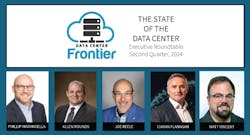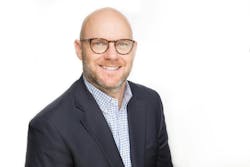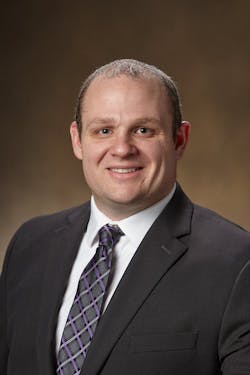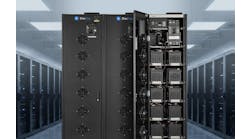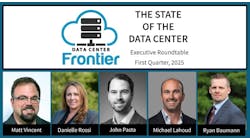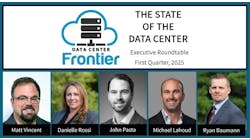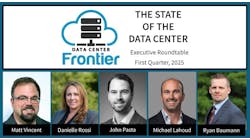Roundtable: Data Center Sustainability Plays for the AI Era
For today's installment of Data Center Frontier's Q2 Executive Roundtable, our four distinguished data center industry leaders were polled on whether and wherefore prioritizing a proactive approach to building greener data centers and fostering resilient sustainability practices squares with the exponential future power demands associated with AI and GPU-based computing.
Our Executive Roundtable for the Second Quarter of 2024 is comprised of:
Phillip Marangella, Chief Marketing and Product Officer, EdgeConneX
Ciaran Flanagan, Global Head of Data Center Solutions, Siemens
Joe Reele, VP Solutions Architects, Schneider Electric
Allen Rounds, Sales Executive, Kohler
Now onto the second question of the week for our Executive Roundtable for the Second Quarter of 2024.
Data Center Frontier: In the industry's now ongoing level-up to global net zero and decarbonization goals, what processes should data center developers and operators be prioritizing for a proactive approach to building greener data centers and fostering resilient sustainability practices, especially in the face of the exponential future power demands associated with AI and GPU-based computing?
Phillip Marangella, EdgeConneX: Implementing 24/7 carbon-free energy, leveraging wind, solar, hydro, geothermal, nuclear, and other carbon-free sources, ensures real-time confirmation of clean power supplies, with AI-based solutions enhancing real-time matching.
And integrating battery storage solutions ensures high availability and contributes to the decarbonization of local grids.
Other key areas include innovative water and waste management practices to minimize environmental impacts on surrounding communities.
In addition, by structuring innovative financing mechanisms around sustainability targets, data centers can lower capital costs and set industry precedents.
Transparency through regular reporting is not just a practice; it's a commitment to foster collaboration. Collaboration is the key to driving industry-wide innovation and efficiency.
Collaboration should be central to one's sustainability approach. We can all develop effective strategies that create a sustainable ecosystem by working closely with our customers, suppliers, and communities. This approach fosters growth for our business and the planet, making everyone a part of this vital journey.
Ciaran Flanagan, Siemens: Our industry has made many promises about net zero, greener data centers, and climate neutrality. While these are credible and essential ambitions, we need to be transparent on the impact of building new facilities, because there is an impact, albeit short, relative to the lifespan of the facility.
Although we have the understanding that sustainability is a journey where we should strive, through technology and process, to incrementally improve operations, we should also acknowledge that building and operating data center facilities does have a sustainability impact.
We should focus less on the claims and really understand the method and the journey.
In the digital realm, the majority of a data center's environmental footprint is generated during its ongoing operations. It is crucial to prioritize decarbonizing the energy sources to significantly reduce this impact.
To move forward, we can collaborate with our partners on what I call the 3Ms approach - measure, manage, and mitigate.
Can you quantify the influence? Can you harness innovative technology to boost efficiency? Can you then actively reduce the carbon inputs?
I think it’s really fascinating to learn and understand what operators do to incrementally get better every year …every watt matters!
Joe Reele, Schneider Electric: Incorporating impactful sustainability processes and guidelines, much like raising a child, takes a village to do correctly!
With this in mind, we see developers, operators and clients prioritizing more of a “partner – solution process” approach, versus the traditional vendor approach.
Partners include utilities (electric, natural gas, water); concrete & steel material industries; many types of electrical, mechanical, and digital companies; along with compute, network, and storage companies. All these groups come together to make a data center.
Prioritizing and proactively bringing the entire ecosystem together allows for the data center to be optimized; matching performance, uptime, financial needs, and sustainability, all together. These partnerships then create a “multiplier effect.”
Allen Rounds, Kohler: The most important step for data centers’ environmental initiatives is identifying relevant metrics, measuring them accurately, and using that data to set goals.
Whether you’re managing your facility’s emissions, reducing carbon-based inputs, or increasing internal efficiency, you can’t understand your consumption until you start tracking it.
From internal stakeholders like shareholders, investors, and employees to external parties like lawmakers, regulatory agencies, and customers, reporting on sustainability metrics is the most definitive way to drive improvements, and, sadly, many data centers simply aren’t doing it.
As more data centers implement tracking systems, the metrics and measurements will become more standardized, and that’s the path to significant industry-wide change toward a more sustainable way of doing business in the data center sector.
Next: Modular Innovation Opportunities

Matt Vincent
A B2B technology journalist and editor with more than two decades of experience, Matt Vincent is Editor in Chief of Data Center Frontier.

